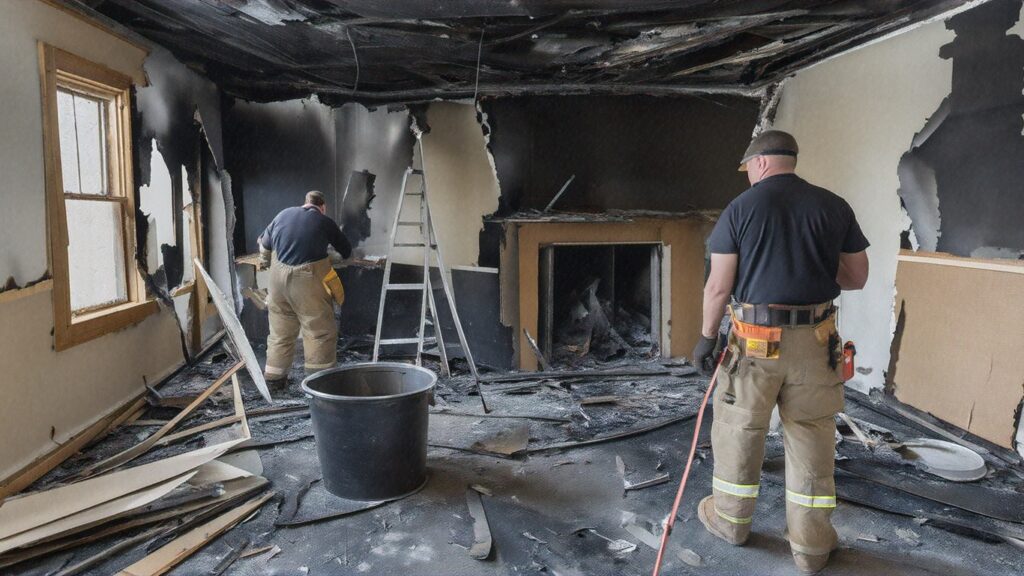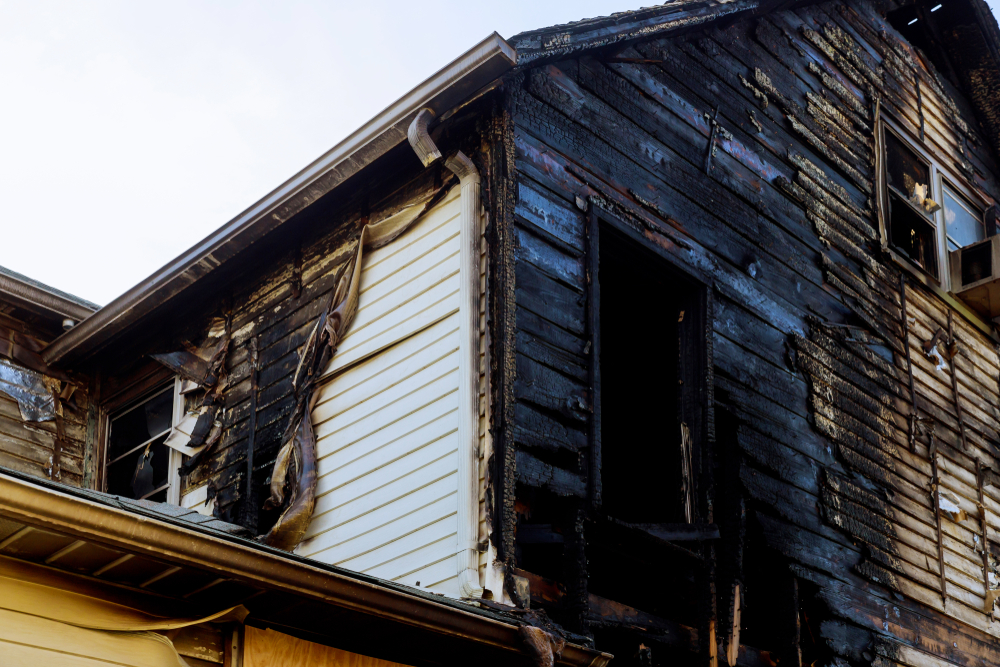While renovating your house can be a thrilling and transforming event, it also brings fresh hazards—particularly related to fire. Exposing wiring, flammable materials, extensive power tool use, and renovations all raise the risk of a fire. Even a small spark can cause major damage with building dust, temporary heating sources, and architectural alterations to the house. Being proactive about fire safety protects your investment and keeps your loved ones safe, not only about obeying rules. Here we offer concise, doable recommendations on how to protect your house during renovations. Discover how to protect your home from fire damage and have a seamless remodeling process by reading on from planning and implementing safe procedures to doing post-renovation inspections and emergency drills.
Understanding the Increased Fire Risk During Renovations
Renovations might reveal hidden hazards and naturally disturb the typical safety measures in your house. Electrical work is one big risk. Renovations including wire upgrades or rerouting run the danger of overloaded circuits or inadequately insulated connections, hence generating sparks and short circuits. Furthermore straining older wire systems not intended for modern power loads is the usage of power tools and temporary electrical configurations.
Another issue is flammable products. Many times, renovations call for paints, solvents, adhesives, and other highly combustible compounds. These compounds can burn with just a stray spark when kept in poorly ventilated spaces or close to heat sources. Common in metals or bespoke installations, welding and cutting operations create sparks that, if appropriate care isn’t taken, might readily start a fire.
Another hazard is the collection of dust and trash resulting from building activity. Like fine gasoline, layers of dust can ignite unexpectedly when mixed with heat or sparks. Furthermore, temporary rearranging of your house during repairs could block or hide emergency exits, therefore complicating evacuation should a fire strike. Making a safer renovation environment starts with an awareness of these higher dangers.
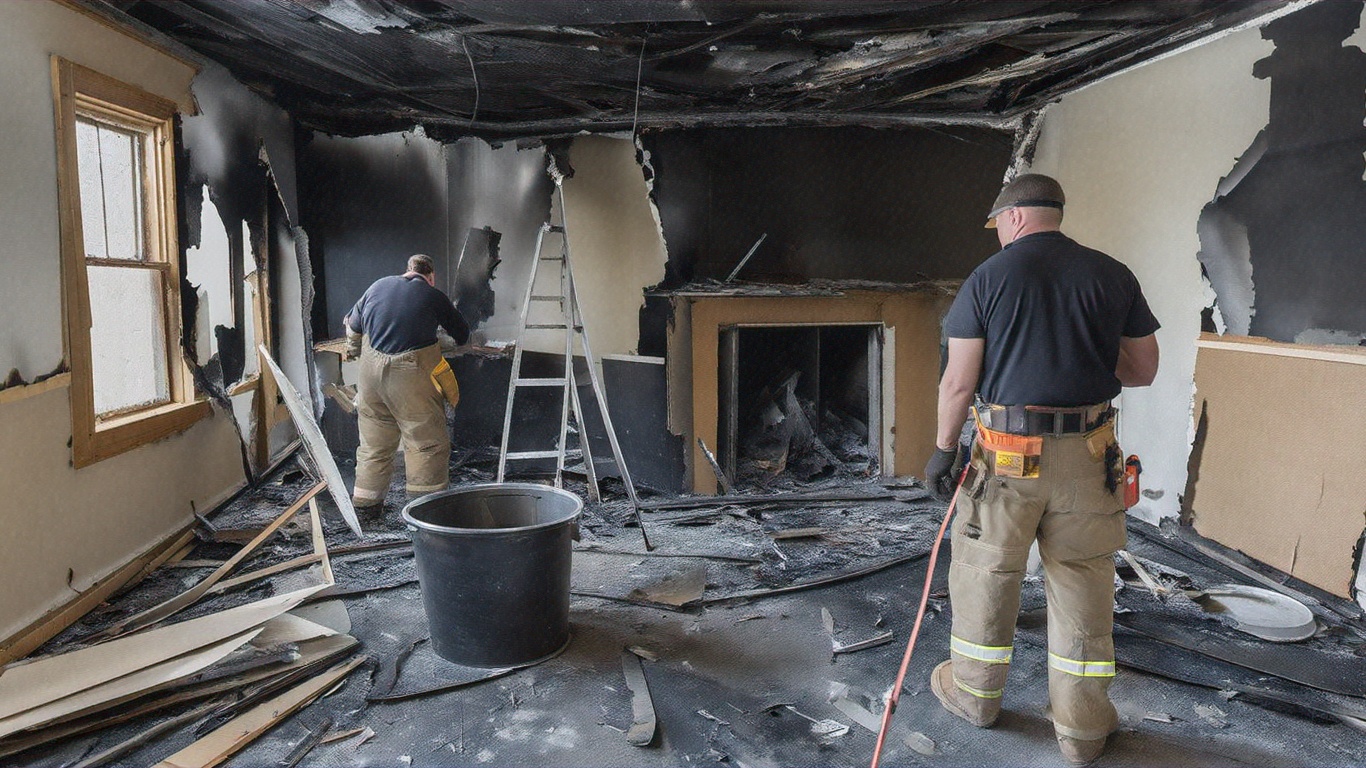
Essential Fire Safety Measures Before and During Renovations
Stopping fire damage begins long before you ever start construction. Strict adherence to safety rules during the refurbishment and a well-considered fire safety plan will help to greatly lower hazards.
Pre-Renovation Planning
- Develop a Fire Safety Plan: First, write a thorough fire safety strategy. This strategy should lay out precise escape routes and a safe meeting place outside your house as well as defined fire protocols. Tell every everyone engaged—family members, contractors, even infrequent visitors—this plan. Everyone knowing what to do helps to create a safer environment.
- Inspect and Update Detectors: Before starting any project, make sure your smoke and carbon monoxide detectors are in good running order. Change any aging or weak batteries. Think about putting more detectors in areas undergoing refurbishment. These devices are absolutely essential in early on danger alerting you.
- Ensure Fire Extinguishers Are Accessible: Fire extinguishers should be kept in high risk areas such close to the kitchen, workshop, or any zone where cutting or welding is scheduled. Make sure they are routinely inspected, completely charged, and that everyone knows where they belong and how to use them.
- Mark Emergency Exits: Renovations can change your regular routes, thus it is crucial to find and precisely label all emergency exits. Clear these paths of clutter and building supplies. In an emergency, well-placed signs and clear paths can literally save lives.
- Inform All Workers: Before the project starts, call a safety conference including every contractor and employee. Describe your fire safety plan and set procedures for handling flammable materials, electrical work, and high-risk operations. Early clear communication guarantees that everyone follows the same safety guidelines.
- Consult with Local Authorities: See your local fire department or building inspector for guidance specifically for your renovation project. They can guarantee your project follows local building rules, assist you hone your safety strategy, and offer opinions on possible hazards. Review your house insurance policy also to know what is covered and, if needed, change it.
During Renovations
Electrical Safety:
- Hire Licensed Electricians: Hire licenced electricians to guarantee that all electrical work is carried out by experts knowledgeable with current standards and safety precautions.
- Avoid Overloading Circuits: Use extension cords only sparingly; never plug too many gadgets into one socket.
- Inspect Wiring Regularly: Look for any evidence of wear or damage on outlets and cables. Replace faulty wiring right away.
- Install GFCI Outlets: Ground fault circuit interrupter outlets help to avoid shocks and lower fire risks in moisture-prone locations such restrooms and kitchens.
Managing Flammable Materials:
- Safe Storage: Store flammable products including paints, solvents, and adhesives in a well-ventilated, dedicated space free of any ignition sources.
- Proper Disposal: Following local recommendations, properly dispose of rags, trash, and any extra items to help to avoid unintentional fires.
- No Smoking Zones: Clearly indicate areas—especially around active work zones and flammable materials—where smoking is forbidden.
Construction Activities:
- Use Spark Arrestors: Install spark arrestors on tools like grinders and welders to lower their stray spark risk.
- Keep Extinguishers Nearby: Always carry a fire extinguisher at arm’s reach whether engaging in activities that create sparks.
- Regular Clean-Up: Dust and building trash should be routinely cleaned up. A neat workspace helps to limit clutter around exits and fuels available for a possible fire.
Temporary Heating:
- Safe Use of Space Heaters: Use caution while using temporary heaters; place them away from combustible objects. Make sure their surface is steady and flat; never leave them alone.
- Constant Monitoring: Always keep an eye on temporary heating equipment; turn them off when the space is not in use.
Site Management:
- Maintain Order: Maintaining order on a worksite increases its safety. Stow equipment, supplies, and trash carefully to avoid inadvertent fires.
- Clear Pathways: Check constantly that all emergency exits remain free of obstacles. Create specific spaces for supplies so that paths never get obstructed.
- Designate Smoking Areas: If smoking is allowed, designate a particular, well-ventilated space free from the work zone to hold any possible hazards.
These precautions both before and during renovations help to lower the risk of a fire and provide a safer surroundings for all those engaged.
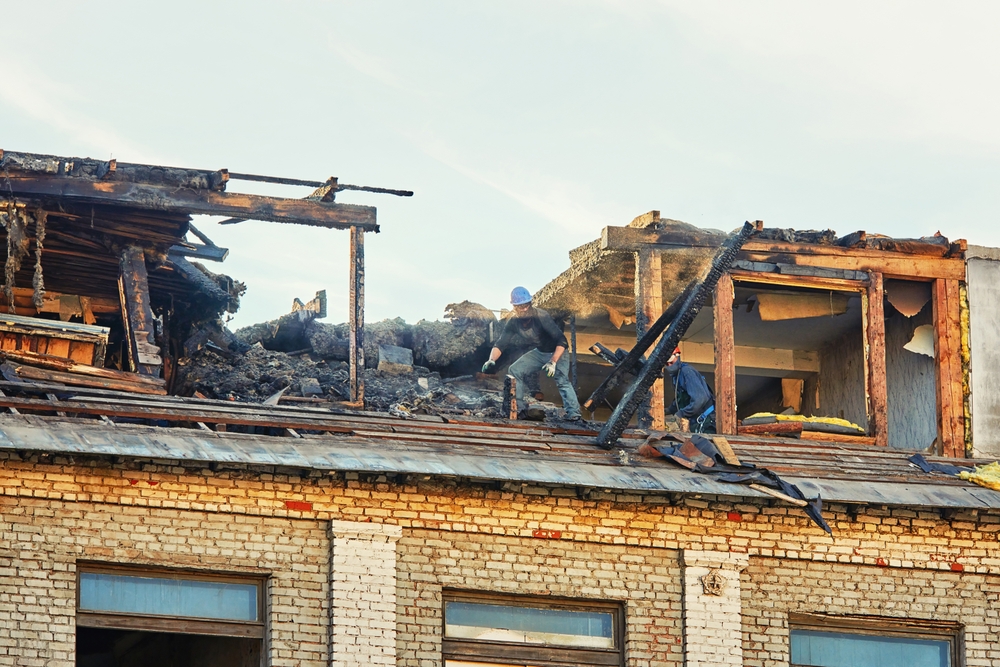
Post-Renovation Fire Safety
Once renovations are finished, one should be constantly alert about fire safety. A comprehensive post-renovation inspection guarantees that the project has unintentionally introduced no dangers.
- Conduct a Detailed Inspection: Perform a thorough, critical eye walk through every part of your house. Investigate all electrical work first. Verify new wiring, outlets, and fixtures for security and correct installation. Search for any indicators of overheating, such discolored outlets or odd smells, which might point to a possible issue. Having a certified electrician check the job can help you to be sure that it satisfies safety criteria.
- Test Your Detectors Again: Renovations sometimes compromise the operation of your smoke and carbon monoxide detectors. Check every unit to be sure they are operating as intended. Replace batteries as needed and install extra units in renovated areas when called for.
- Inspect Heating and Cooling Systems: Renovations could cause disturbance to your HVAC system. Make sure dust and trash free vents and ducts could lead to overheating. Frequent maintenance—including expert inspections and cleaning—can help to avoid future fire threats.
- Review Storage and Layout Changes: Make sure all flammable material storage spaces remain safe and orderly post-renovation. Check sure emergency exits are free and that temporary work stations have been cleared. Review your fire safety strategy and revise it should your house’s layout have altered dramatically.
- Ensure Compliance with Building Codes: Verify that all renovation activity conforms to local building codes and fire safety guidelines. This not only guards your house but could also be very important for insurance claims should future events transpire.
By following these post-renovation guidelines, one helps to preserve a safe living environment over the long run and confirms the safety gains obtained throughout the project.
Emergency Preparedness
Not even the greatest defenses can totally remove all risk. Should a fire strike, being ready for an emergency can greatly help to guarantee everyone’s safety.
- Develop and Practice an Escape Plan: Create a thorough fire escape plan including several evacuation paths from every room in your house and then practice it. Regular application of this strategy among all home members will help everyone to know exactly what to do should the alarm ring. Make sure everyone can congregate and be tracked for at least a safe gathering place outside your house.
- Educate on Fire Extinguisher Use: Teach everyone in your house the PASS technique—Pull, Aim, Squeeze, and Sweep—by first hand experience. Make sure every family member can efficiently operate a fire extinguisher. Install extinguishers in handy places and often inspect them to be completely charged and operational.
- Establish a Quick-Response Protocol: Create a Quick-Response Protocol whereby everyone is aware that, should a fire strike, the first response should be to promptly evacuate and alert emergency services. List emergency contacts close to your phone and within your fire safety strategy. Knowing you can rely on professional support rapidly can help to lower anxiety and guarantee a speedier, safer evacuation.
By planning ahead for crises, you not only safeguard your house but also give yourself hope for your capacity to cool under pressure and deal with unanticipated events gracefully and wisely.
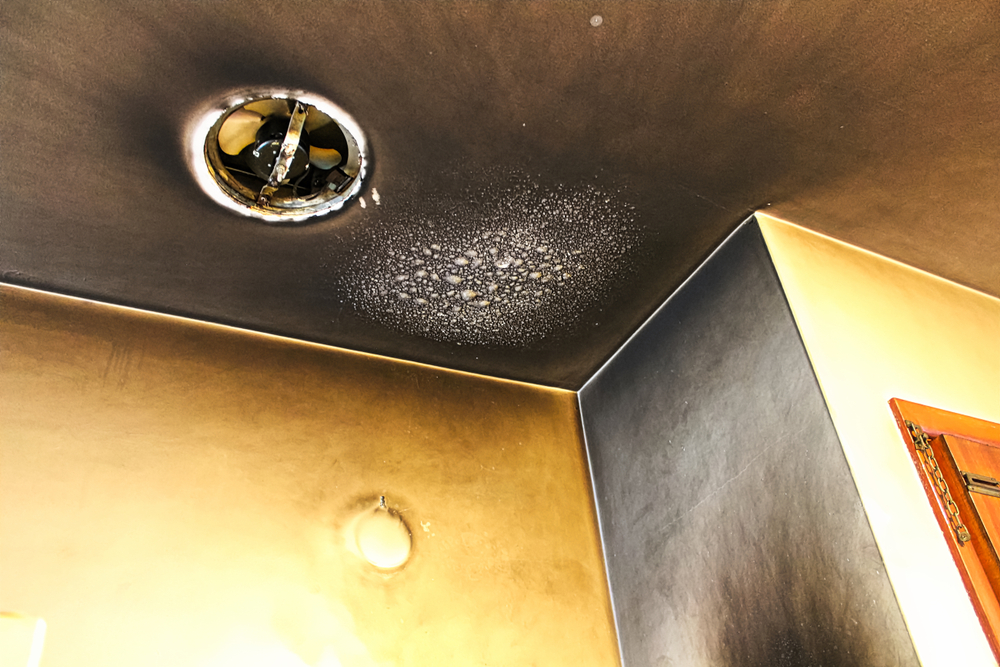
Conclusion
Renovating your house presents a chance to represent your own style, but it also increases your chances of fire damage. By knowing the hazards—from electrical work to the usage of combustible materials—and putting proactive fire safety precautions into practice, one may greatly lower these hazards. You protect your property and your loved ones by forward planning, careful protocol following throughout renovations, extensive post-renovation inspection, and emergency readiness. Remember constantly that fire safety is a continuous responsibility and that frequent maintenance and awareness are essential to maintain your house safe even following renovations.
Philadelphia Restoration Services
https://www.google.com/maps?cid=3399342399556699153
+1 267 668 0013
https://philadelphiarestorationservices.com/

